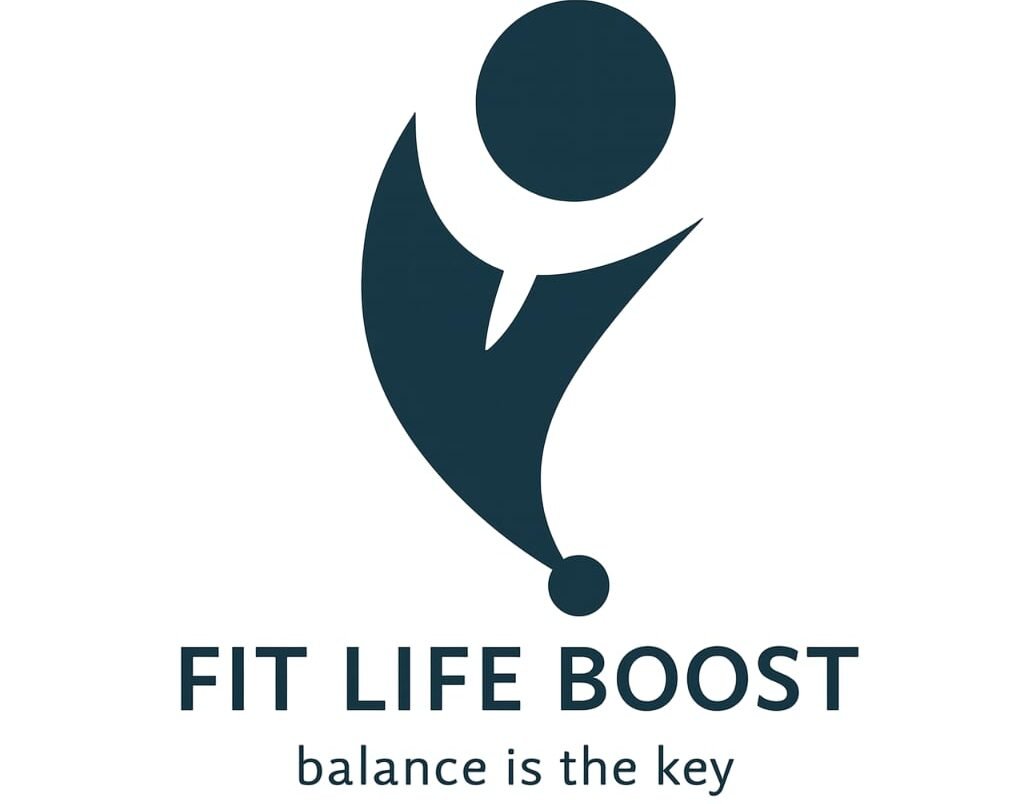Best lunches to take to work for weight loss: 9 Tips (2025)
Best lunches to take to work for weight loss that curb cravings, save money, and fit your calories. Get simple recipes + gear picks. Start packing smarter today.
Table of Contents
- Best lunches to take to work for weight loss
- Why work lunches make or break results
- High-protein, low-calorie lunch frameworks
- Make-ahead meal prep that actually lasts
- Smart carbs: volume without the spike
- Portable fats that keep you full
- No-reheat lunch ideas for office life
- Reheat-friendly bowls and soups
- Budget lunch swaps vs takeout
- Time-saving tools & containers
- Buyer’s Guide & Comparison Table
- Local tips for your weekday routine
- FAQs
- Conclusion & Next Steps
Best lunches to take to work for weight loss
Rushing between meetings and grabbing whatever’s fast can wreck even the best intentions. If you’re searching for the best lunches to take to work for weight loss, chances are you’re battling long mornings, surprise calendar invites, and a vending machine that knows your name. Good news: you don’t need chef skills or two free hours every night. You need a repeatable lunch framework—high-protein, fiber-forward, portion-aware—so you stay full, energized, and on track. Below you’ll find simple prep strategies, real-world lunch combos, and gear that makes packing effortless. Expect practical ideas, not perfection. You’ll learn what to buy, what to batch, how to portion, and how to keep lunches crave-worthy without blowing calories.
Why work lunches make or break results
A single weekday lunch can swing 600–1,200 calories depending on choices. When weight loss is the goal, that margin matters. Office culture nudges you toward calorie-dense defaults: oversized deli sandwiches, creamy soups, and “healthy” grain bowls drenched in dressing. Planning your lunch even a little shifts the math in your favor. Aim for meals with 25–40 g of protein, 8–15 g fiber, and smart carbs. This combo smooths hunger and prevents the 3 p.m. snack spiral. The Centers for Disease Control and Prevention notes that consistent, modest calorie deficits paired with daily routines tend to be the most sustainable approach to healthy weight management (see CDC Healthy Weight guidance). Small, consistent wins at lunch move the needle without white-knuckling through the day.
High-protein, low-calorie lunch frameworks
Think in templates, not recipes. Templates reduce decision fatigue and keep grocery lists tight.
- Protein + High-Volume Veg + Smart Carb + Sauce
- Protein: chicken breast, tuna, salmon, tofu, tempeh, cottage cheese, Greek yogurt, turkey, lentils.
- Veg: leafy greens, cucumbers, bell peppers, cherry tomatoes, broccoli slaw, roasted cauliflower.
- Smart carbs: farro, quinoa, barley, chickpeas, lentils, high-fiber tortillas.
- Sauce: salsa, Greek yogurt ranch, tahini-lemon (light), chimichurri, mustard + vinegar.
- Protein Salad Jars
- Layer sturdy veg on bottom (cucumber, beans), then grain, then protein, then greens; dressing in the very bottom so greens stay crisp.
- High-Protein Bento
- 1–2 proteins, 2 veg sides, 1 smart carb, 1 “flavor hit” (pickles, olives, hot sauce).
Quick wins:
- Buy pre-cooked proteins (rotisserie chicken, ready-to-eat lentils).
- Use 2-oz dressing cups to auto-limit calories.
- Keep a “desk pantry” (spices, hot sauce, vinegar, light microwaveable grains).
Make-ahead meal prep that actually lasts
The 2+2 Method: proteins & bases
Cook 2 proteins and 2 bases on Sunday for four mix-and-match lunches:
- Proteins: chicken breast + extra-firm tofu.
- Bases: quinoa + broccoli slaw.
Now rotate: chicken–quinoa bowl, tofu–quinoa jar, chicken–slaw wrap, tofu–slaw salad. Add different sauces daily to keep it fresh.
Storage pointers:
- Use shallow glass containers so food cools quickly—safer and tastier.
- Pack dressings, acids (lemon), and crunchy toppings separately until serving.
- Most cooked proteins keep 3–4 days refrigerated; grains 4–5 days.
Internal resource: See portion control strategies in your guide here: Protein Sources for a deeper dive on calorie budgeting at lunch.
Smart carbs: volume without the spike
Fiber-first carbs for steady energy
Not all carbs hit the same. Choose whole grains and legumes that bring fiber, micronutrients, and chew-factor:
- Quinoa, farro, barley
- Chickpeas, lentils, black beans
- High-fiber wraps (8–12g fiber)
- Potatoes (especially cooled for more resistant starch)
Pairing carbs with protein and veggies lowers the overall caloric density—more plate for fewer calories. Use the half-plate veg rule, a quarter-plate protein, and quarter-plate smart carbs. If you’re hovering over calories, drop carbs to 1/8 plate and add more non-starchy veg.
Reference: For healthy eating patterns, see the CDC Healthy Weight overview: https://www.cdc.gov/healthyweight/index.html
Portable fats that keep you full
Use small, strategic portions
Fats are satisfying but calorie-dense. You don’t need much:
- 1–2 tsp olive oil (tossed with lemon + herbs)
- 1 tbsp tahini or nut butter
- ¼ avocado
- 1 tbsp nuts or seeds
Pack fats separately so you control the pour. A tiny sauce cup can save ~100–200 calories.
Flavor boosters that travel:
- Pickled onions, capers, chili crisp (use sparingly), roasted garlic paste, vinegars, Dijon mustard.
- Citrus wedges in a bag for last-minute brightness without added calories.
No-reheat lunch ideas for office life
Cold, crisp, and craveable
- Mediterranean Protein Bento
- Turkey slices (5–6 oz), cucumber, cherry tomatoes, olives (10), ¼ cup hummus, 1 high-fiber pita.
- Swap turkey for grilled tofu to keep it plant-forward.
- Tuna-White Bean Salad Jars
- Bottom: 2 tbsp light vinaigrette → ½ cup white beans → 4–5 oz tuna → chopped peppers → arugula.
- Add lemon at desk; serve with a whole-grain crispbread.
- Cottage Cheese Power Box
- 1 cup low-fat cottage cheese, carrots, bell peppers, ½ cup berries, 10–12 almonds.
- Add everything bagel seasoning.
- Chicken Caesar Wrap (Light)
- Whole-grain high-fiber wrap, 4–5 oz chicken, lots of romaine, shaved parm (1 tbsp), light Caesar yogurt dressing.
- Lentil Veggie Bowl
- Ready-cooked lentils, diced cucumbers/tomatoes, parsley, lemon, teaspoon olive oil, sprinkle feta.
Portion tip: Keep wraps to 1, bowls to ~400–550 calories. If hungry later, pair with a high-protein snack (Greek yogurt cup or jerky).
Reheat-friendly bowls and soups
Warm and filling with great macros
- Chicken Fajita Quinoa Bowl
- Quinoa, sautéed peppers/onions, 5 oz chicken, salsa, dollop Greek yogurt.
- Add lettuce post-heat for crunch.
- Turkey & Veggie Pasta (High-Protein)
- High-protein pasta, 93% lean turkey, marinara, spinach.
- Finish with fresh basil and chili flakes.
- Miso-Ginger Tofu Veg Stir-Fry
- Tofu, broccoli, snap peas, mushrooms, light miso-ginger glaze.
- Serve over cauliflower rice + ½ cup brown rice for balance.
- Hearty Bean & Greens Soup
- Cannellini beans, kale, carrots, celery, light broth; finish with lemon.
- Pack separately to avoid soggy.
- Salmon & Farro Bowl
- Roasted salmon, farro, roasted Brussels, mustard-dill yogurt sauce.
Microwave hacks: Vent lids, stir halfway, keep sauces separate. Add fresh herbs after heating.
Budget lunch swaps vs takeout
Save money, save calories
- $12–$16 grain bowl → DIY bowl at ~$3–$4/serving using bulk grains and frozen veg.
- $10 sandwich → High-fiber wrap with lean protein and crunchy veg at ~$2–$3.
- $14 salad → Salad jar with chickpeas, veggies, light dressing at ~$3–$4.
Side-by-side comparison:
- Takeout Caesar wrap (~700–900 cal) vs light Caesar wrap (~430–520 cal).
- Creamy soup + bread (~800–1,000 cal) vs bean & greens soup (~350–450 cal).
Internal resource: Try these meal-prep basics to cut time and cost: meal prep primers and grocery list.
Time-saving tools & containers
Gear that earns its keep
- Glass meal prep containers (3–4 cup): keeps flavors fresh, reheats safely.
- Leakproof dressing cups (1–2 oz): portion control for sauces.
- Insulated lunch bag: food-safe temps during commute.
- Slim ice packs: keep dairy and proteins safe.
- Microwave steamer bowl: reheat veggies perfectly.
Amazon picks (neutral, factual; replace StoreID if needed):
- Bentgo Glass 3.4-Cup leakproof container — sturdy, oven-safe.
Pros: tight seal; Cons: heavier than plastic. Best for reheat bowls.
Click to View - Sistema 2-oz Dressing Containers — simple portioning.
Pros: lightweight; Cons: not for hot liquids. Best for sauces.
Click to View - Hydro Flask 8L Lunch Bag — insulation for long commutes.
Pros: holds shape; Cons: price. Best for hot/cold control.
Click to View
Buyer’s Guide / Comparison Table
| Item | Capacity/Type | Pros | Cons | Price Signal | Best For |
|---|---|---|---|---|---|
| Bentgo Glass | 3.4-cup glass | Leakproof, oven-safe | Heavier | $$ | Bowls, reheats |
| Sistema Sauce Cups | 2 oz plastic | Portion control | Not for hot | $ | Dressings, dips |
| Hydro Flask Lunch Bag | 8L insulated | Cold/heat retention | Cost | $$ | Long commutes |
| Rubbermaid Brilliance | 4.7-cup plastic | Clear, tight seal | Not oven-safe | $–$$ | Salad jars, bento |
Local tips for your weekday routine
Even without a specified city, tailor your plan to local realities:
- Commute length: use insulated bags + ice packs for >45 minutes.
- Office fridge access: if limited, prioritize no-reheat bentos and sealed yogurt-based dressings.
- Nearby grocers: stock “emergency lunch kits” (tuna pouch, microwave grains, bagged salad).
- Seasonality: winter—soups and reheats; summer—salad jars, cold bowls, and fruit-heavy sides.
- Returns/delivery: when ordering containers online, check return windows and shipping times to avoid gaps in your prep routine.
FAQs
1) What are the best lunches to take to work for weight loss if I can’t reheat?
Go for protein-forward bentos: turkey or tofu, crunchy veg, hummus, high-fiber pita, fruit. Tuna–bean salad jars, cottage cheese protein boxes, and lentil tabbouleh bowls also travel well without heat.
2) How much protein should lunch have for weight loss?
Aim for 25–40 g. That range helps curb hunger and supports lean mass while in a calorie deficit. Build each lunch around a clear protein anchor, then add fiber and smart carbs.
3) Are wraps or rice better for work lunches?
Both can fit. High-fiber wraps (8–12 g fiber) are easy to pack. For bowls, pair ½ cup cooked whole grains with lots of vegetables to keep calories in check.
4) What sauces are low-calorie but satisfying?
Greek yogurt ranch, salsa, mustard-vinegar dressings, lemon-tahini (light), chimichurri in small portions. Pack sauces in 1–2 oz containers to avoid overpouring.
5) How can I stop snacking after lunch?
Increase protein and fiber at lunch, add a small portion of healthy fat, and preload with water or tea. If you’re still hungry, plan a high-protein snack (Greek yogurt, jerky, edamame) around 3 p.m. to prevent impulsive vending runs.
Conclusion & Next Steps
Dialing in the best lunches to take to work for weight loss is less about recipes and more about repeatable structures: protein-first, fiber-rich, with smart carbs and controlled sauces. Start with two proteins and two bases each week, rotate sauces, and rely on a few durable containers. You’ll save money, avoid the 3 p.m. slump, and keep progress steady. For next steps, explore our in-depth guides on portion-friendly planning here and meal prep primers here. When you’re ready to level up your kit, check our recommended gear or head to our resources page here. Small systems, big results—pack once, win all week.
#BestLunchesToTakeToWorkForWeightLoss #HealthyWorkLunches #LowCalorieLunch #HighProteinMealPrep #OfficeLunchIdeas #WeightLossMeals








oh very good article . love that